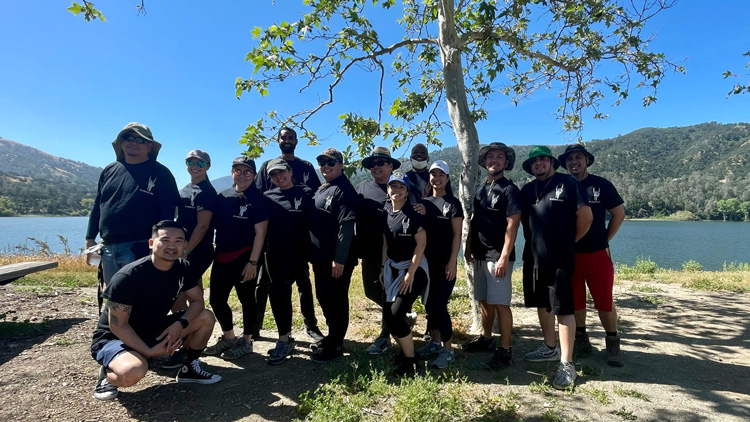
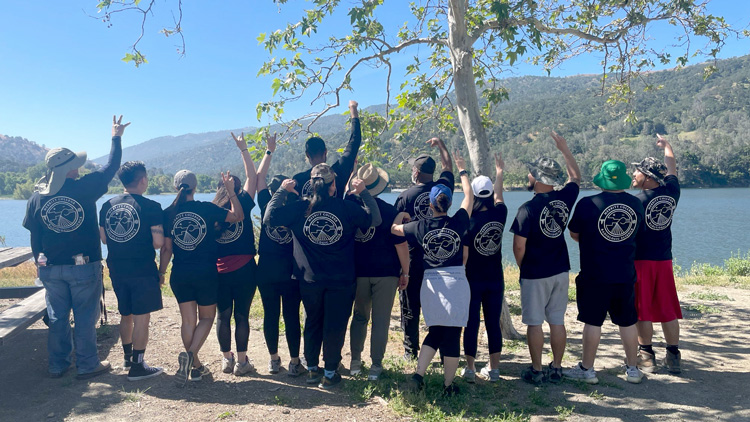
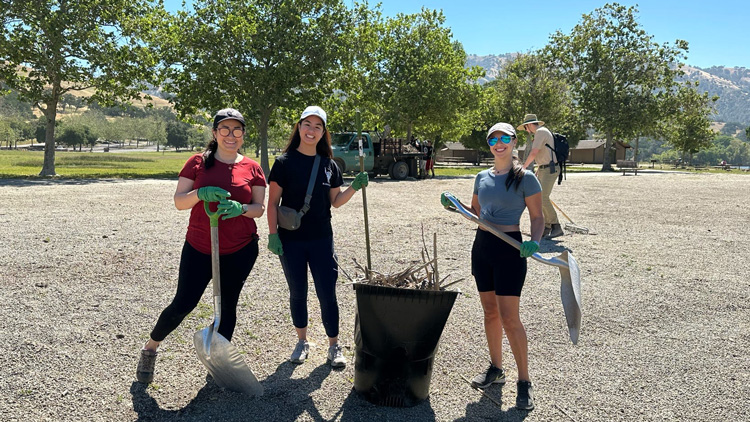
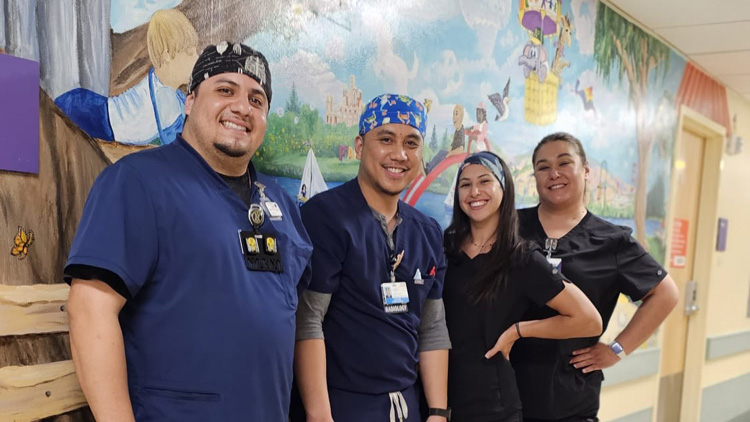
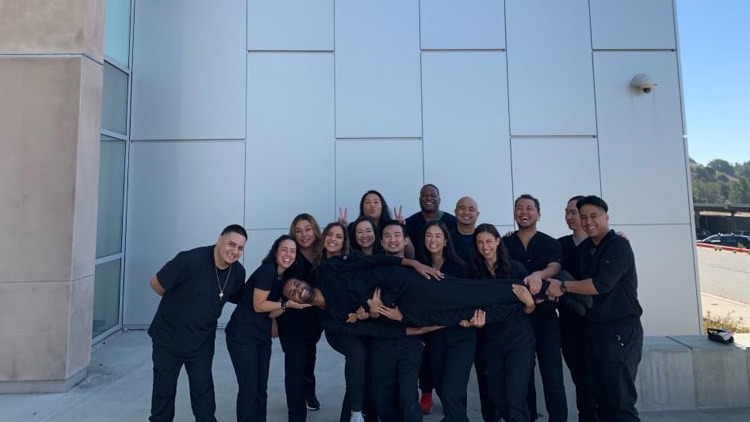
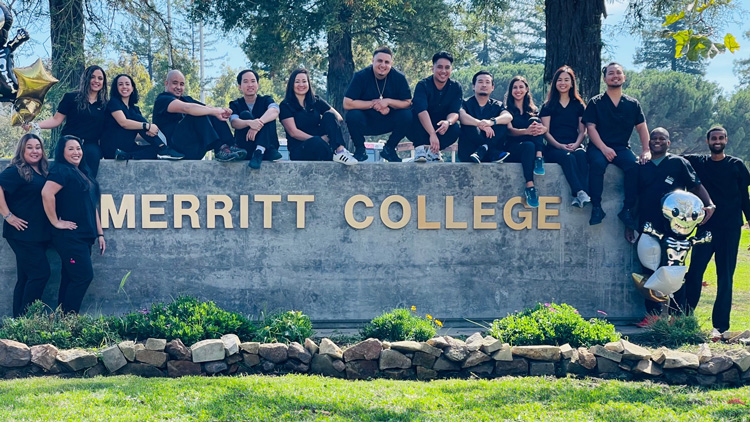
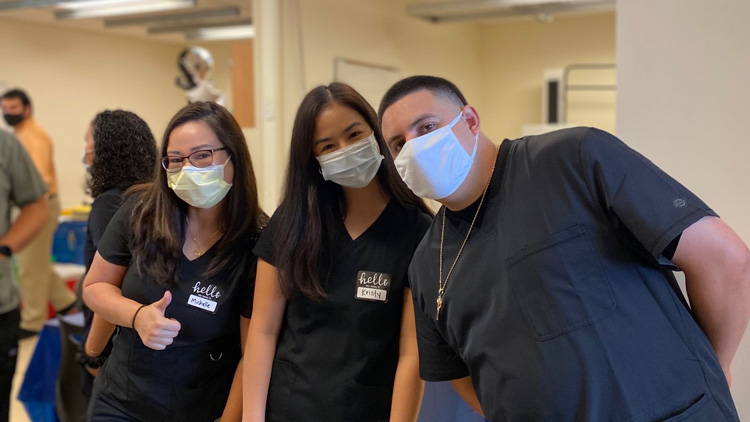
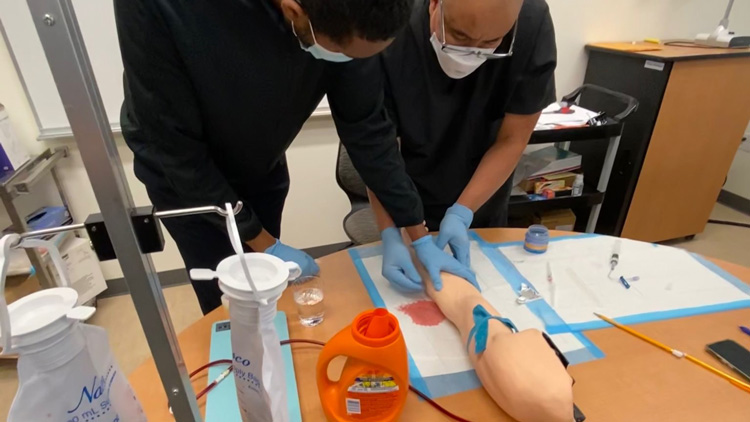
The purpose of the Merritt College Radiologic Science program is to prepare qualified practitioners in the art and science of medical imaging. Radiologic Technologists manipulate sophisticated technical equipment and computers to obtain detailed images of the human body. These images assist physicians in the diagnosis of injury and disease in the clinical environment. Radiologic Technologists work in hospitals, clinics, imaging centers, and physicians’ offices. A successful and competent Radiologic Technologist is one who works well as a team member, thinks critically, solves problems creatively, possesses strong technical skills, and cares for patients with sensitivity and compassion. The technologist must be flexible and able to work with patients from diverse cultural backgrounds with various needs, abilities, injuries, and disease processes. The program’s student learning outcomes focus on developing these important characteristics in program graduates.
The Associate of Science in Radiologic Science degree will be awarded upon satisfactory completion of the Prerequisite requirements, the Degree Major requirements, and the local AA/AS General Education requirements. A Certificate of Achievement will be awarded upon satisfactory completion of the Prerequisite requirements and the Certificate requirements. The certificate-only option is available only to those who have already earned an Associate degree or higher.
A Certificate of Achievement will be awarded upon satisfactory completion of the Prerequisite requirements and the Certificate requirements.
The curriculum includes a clinical practicum at various East Bay hospitals. This is a continuous program of 24 months duration. Students who are applying to the program should be prepared to dedicate their full time of approximately 36 hours per week during the day for a continuous period of two years, which will include two summers. After successfully finishing the necessary Radiologic Science courses and meeting the Associate degree requirements of Merritt College (or its equivalent), the student becomes eligible to sit for the examination conducted by the American Registry of Radiologic Technologists. This exam is a prerequisite for obtaining certification and practicing in California. After successfully completing the program and receiving the California certificate, graduates will be eligible for employment as Radiologic Technologists. They will be capable of performing a broad range of patient radiographic procedures in various healthcare settings such as hospitals, clinics, medical offices, and imaging centers.
Program Learning Outcomes:
Students who complete the degree or certificate will be able to:
- Produce diagnostic-quality medical images in a competent, safe, and compassionate manner for all basic radiography examinations in a hospital work environment.
- Communicate effectively with patients and family members by taking appropriate histories, giving clear instructions, and providing information as needed.
- Communicate in a professional manner with hospital staff, instructors, and peers.
- Exercise critical thinking and problem-solving skills by adapting radiologic procedures examinations to individual patient needs and conditions.
- Establish and maintain satisfactory professional relationships with other members of the healthcare team.
- Function as an effective healthcare team member by providing services in a manner that complements those performed by other team members.
- Demonstrate a commitment to professional development.
Prerequisite Requirements:
Before applying to the program, students are required to have completed the four prerequisite courses, each with a minimum grade of ‘C’. Furthermore, the cumulative GPA for these four prerequisite courses should be no less than 2.5. It is also important to note that all prerequisite courses should have been completed within the last seven years.
The prerequisite courses are as follows:
A. Radsc 1A, Survey of Radiologic Science: This course is mandatory and cannot be waived under any circumstances. It must be undertaken at Merritt College to be considered valid.
B. Math 203, Intermediate Algebra, or a higher level. An equivalent course can be pursued at other institutions.
C. Anatomy and Physiology: This should be a two-semester course sequence, totaling a minimum of 8 units and including a lab. Equivalent courses from other colleges are acceptable. At Merritt College, there are two qualifying options:
… Biol 20A and Biol 20B (Human Anatomy and Physiology) (5 units each, 10 units in total), OR
… Biol 2 (Human Anatomy) and Biol 4 (Human Physiology) (5 units each, 10 units in total).
Strongly Suggested Preparation:
Expectations for Computer Proficiency: It is anticipated that students who are joining the program will have proficiency in using Microsoft Word, email, PowerPoint presentation software, and internet navigation. Students who lack these skills should refer to Item No. 1 under Further Recommended Preparation.
Further Recommended Preparation:
The program recommends certain specific coursework and experiences as preparation. Although these are not mandatory for enrollment, completing these courses before entering the program could enhance the chances of successful program completion.
Suggested Coursework:
- Introduction to Computer Information Systems (CIS 1 at Merritt College) or a similar course(s). The course or a combination of courses should lead to proficiency in Microsoft Word, PowerPoint presentation software, internet navigation, and email.
- Advanced Mathematics (such as College Algebra, Pre-Calculus, or Calculus).
- Physics such as Introduction to Physics, General Physics, or Physics of Radiation and/or Electromagnetism.
- Medical Terminology.
- Professional or Business Communications.
The recommended coursework might fulfill some of the General Education requirements. It is suggested that students consult with a Merritt College counselor for proper planning.
Suggested Experiences:
- Healthcare experience, either as an employee or volunteer, preferably involving direct patient care.
- Customer service experience as an employee or volunteer, involving direct interaction and communication with the public.
Degree Major/Certificate of Achievement Requirements:
| Dept/No. | Title | Units |
| RADSC 1B | Introduction to Medical Imaging | 2 |
| RADSC 1C | Introduction to Medical Imaging Clinic | 2.5 |
| RADSC 2A | Radiographic Physics I | 2 |
| RADSC 2B | Radiographic Physics II | 4 |
| RADSC 2C | Digital Applications in Medical Imaging | 4 |
| RADSC 3A | Positioning I | 4 |
| RADSC 3B | Positioning II | 4 |
| RADSC 4A | Radiation Protection | 2 |
| RADSC 4B | Radiobiology | 2 |
| RADSC 5A | Patient Care I | 3 |
| RADSC 5B | Patient Care II | 3 |
| RADSC 6 | Quality Management/Fluoroscopy | 2.5 |
| RADSC 7 | Advanced Imaging Procedures | 3 |
| RADSC 8 | Sectional Anatomy and Radiographic Pathology | 4 |
| RADSC 9A | Clinical Experience I | 4 |
| RADSC 9B | Clinical Experience II | 4 |
| RADSC 9C | Clinical Experience III | 6 |
| RADSC 9D | Clinical Experience IV | 6 |
| RADSC 9E | Clinical Experience V | 6 |
| RADSC 10A | Seminar | 1.5 |
| RADSC 10B | Seminar | 1.5 |
| Total Required Units for Degree Major or Certificate: |
71 |



